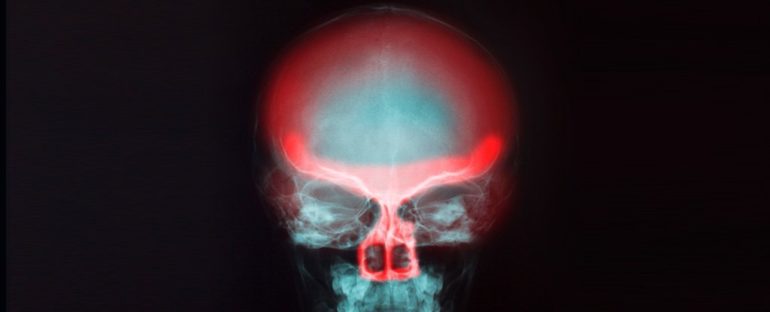Our sense of smell appears to be exceptionally good – and quick – at warning us of danger, a new study has revealed.
Results of two experiments run by researchers at the Karolinska Institute in Sweden indicate the scent-detecting nerves deep inside our nose start processing negative odors the moment they’re detected, triggering our body into a more rapid response.
Consider this in contrast to our visual and auditory systems, which mail sensory responses into specialized units inside the brain for processing, delaying the time it takes for the body to get up and move.
This might come as something of a surprise, given how much we depend on sight and sound to navigate our world. Yet for so many other members of the animal kingdom, quickly picking up on the subtlest of scents can make all the difference between feeding and fleeing.
Studies in rodents have demonstrated just how brain-like that bundle of scent-detecting nerves – also known as the olfactory bulb – can be. Far from a mere post-box for smells, this collection of neurons can actively sort stimuli based on learned and innate responses, for instance.
This is especially true when it comes to potentially dangerous situations. When you’re moments away from nibbling on a noxious morsel, or worse, already sniffing up a lungful of toxic fumes, you don’t want to waste precious fractions of a millisecond calculating your response.
Yet what is true in rats and mice might not necessarily be true for humans. Millions of years of evolution separate us even from our closest relatives, so what’s to say our olfactory bulbs haven’t withered a little?
To test it, the team recruited 19 reportedly healthy non-smokers to take a quick sniff of six different odors.
Some, like the perfume of linalool or fruity-smelling ethyl butyrate, could be considered relatively pleasant. Others, like the garlicky tang of diethyl disulfide, typically had less appeal.
Presenting the volunteers with each odor a number of times, the researchers measured the reactivity of the olfactory bulb noninvasively using electroencephalography. Not only did this give them a timing on the responses, it allowed them to take stock of two distinct types of ‘brain wave’ the nerves were producing.
One was gamma waves – fast-processing waves we rely on for attention and memory. The second was slightly slower beta waves, an oscillation of brain activity utilized in deliberate decision making processes.
The presence of both of these waves near our nasal neurons implies the very moment a fragrance tickles our olfactory bulb, it’s preparing other parts of the brain – such as our motor cortex – to get cracking.
In a second experiment using 21 volunteers, the team tested whether this warm-up translated into an actual body response.
Two nice odors – strawberry and carvone (an essential oil found in mint and dill) – were compared with something unpleasantly fishy and the cabbage-stink stench of ethanethiol. After taking a whiff, the movements of the volunteers were measured to get a sense of how long it took for the smell to get them to physically react.
Putting the data together, it’s clear our olfactory bulb processes pleasant and threatening odors at different speeds. Hit with something ugly smelling, it takes us just half a second to jerk away. If it’s not so bad, we’ll take our time.
But there’s a lot going on inside that half a second. Within 250 milliseconds of an odor arriving within the nose, the two different brain waves are ‘coupling’ to coordinate a response.
If the smell is deemed a threat, a signal is sent earlier, taking around 150 milliseconds to hit the motor cortex. If not, it could take a lot longer before a message is generated.
“It was clear that the bulb reacts specifically and rapidly to negative smells and sends a direct signal to the motor cortex within about 300 milliseconds,” says Johan Lundström, a biologist at the Karolinska Institute’s Department of Clinical Neuroscience.
Research on visual and auditory reaction time has measured the entire process from detection to movement as a touch faster; roughly 150 milliseconds for a reaction to sound and under 200 milliseconds for sight.
While it might take us a little longer to recoil from a bad smell, it could be considerably longer if our olfactory bulb wasn’t already teasing apart the signal.
“The results suggest that our sense of smell is important to our ability to detect dangers in our vicinity, and much of this ability is more unconscious than our response to danger mediated by our senses of vision and hearing,” says Lundström.
Which means we can all breathe a big sigh of relief, confident our nose knows best.
This research was published in PNAS.



